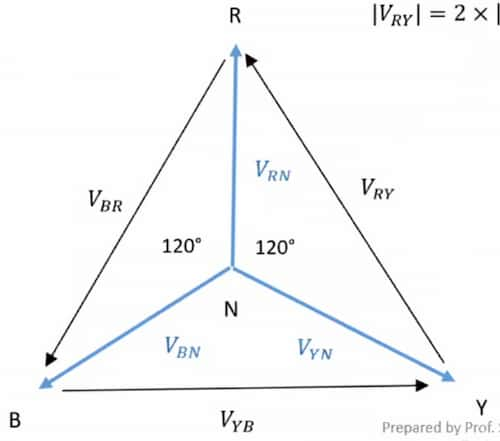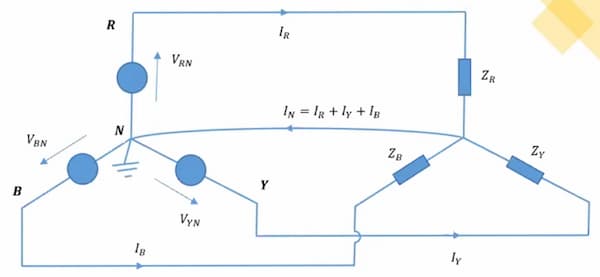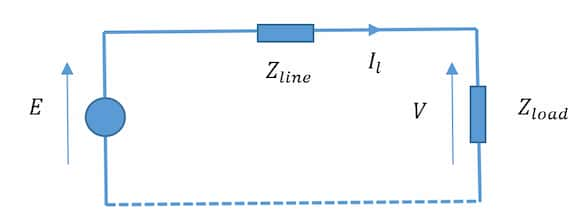3-Phased System
Why 3-phase?
- The current can be distributed into 3 wires instead of just 1.
There is a maximum limit of how much current a wire can carry. - Economical as less amount of wires.
3-phase system requireswires ( if balanced) while single phase system requires .
The phases are denoted by
Balanced 3-phase
A 3-phase system is said to be balanced iff:
- Supply is balanced
- Loads are the same in each phase
Power source
A 3-phase power source which produces 3 phase voltages of equal rms value, but
with
Phasor diagram

Phase voltage
Voltage between a phase wire and the neutral wire.
Line-to-line voltage
Voltage between any 2 phase wires. Line-to-line voltages also have a
Analysis

When the loads are balanced:
In this case, neutral wire can be eliminated (it’s optional). We need to
maintain
Real-life Usage
Most domestic loads are single-phase. In case of 3-phase domestic wiring, the single-phase loads are distributed among the 3 phases at the main distribution board.
Devices that have a 3-phase power input, doesn’t require a neutral line.
Per-phase Equivalent Circuit
Power, voltage, current, power factor are same for all
When a 3-phase system is balanced, it is sufficient to consider only a single phase. The diagram showing the single-phase equivalent of the power system using standard symbols.

Here:
Here:
- The power can either be source power, load power, transmission power losses.
Unbalanced 3-phase system
A 3-phase system becomes unbalanced, when load distribution among the phases is
equal.